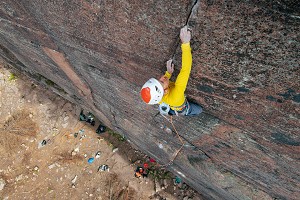
Sally Lisle shares four simple (but not necessarily easy to implement) tools to help you grapple with fear when it kicks in mid climb...
If you are operating on the cusp of controlling/losing control of your fear response, it is highly valuable to have a few techniques up your sleeve to manage your fear when you really need to. Maybe you are pushing your grade, maybe you're new to this type of climbing or maybe something else unrelated in your life is occupying some of your emotional capacity. Equally, if you're looking to maximise your performance and enjoyment the same methods and concepts can be used very effectively to improve your confidence and adjust your physical arousal. They don't have to be held in reserve for an emergency!

This article talks through four specific practical fear management strategies to apply during your climb and exactly why they work. They can be used together or independently. I have used and taught these methods countless times with great success.
2. Breathe
3. Relax
4. Be Positive
The scientific measurable human response to fear has been thoroughly studied with decades of academic work. The better your understanding of your individual fear response, the better you can anticipate your body's reaction, control your physical arousal level (prevent yourself panicking) and harness the physiological benefits gained by having stress hormones in your system. For a detailed look at the chemistry behind the fear response read my previous article Playing with Fear.
All of the following strategies link into these chemical processes in the body. The most important fact to bear in mind is that when afraid your body releases stress hormones. These can have both a positive and negative impact on your climbing - either extra energy and focus or profuse sweating, overgripping, tunnel vision, shaking, feeling sick and fatigue… It is your pre-climb preparation and emotional/psychological interpretation that will dictate how sensitive you are to something scary happening and whether your experience is positive or negative.
If you become consciously afraid during a climb your interpretation of your physical arousal commonly becomes negative and these physical symptoms are amplified. Thoughts of doubt creep into your mind and can start to spiral. – "I'm tired" – "I'm not even at the crux" – "My hands are slipping" – "Why didn't I wear my tight shoes?" - "That gear is rubbish" - "I'm scared" – "Why am I climbing?" – "I don't want to fall off" - "I'm falling" – "How am I still on?" – "I'm falling". If you fall into the trap of letting these negative thoughts compound, you are unfortunately convincing your brain that there is something to be afraid of and that it should do something radical to get you out of this scary situation (your prefrontal cortex is repeatedly sending stimuli to the amygdala signalling it to flood your system with stress hormones). You run the risk of panicking. To prevent this situation happening, you need to be able to recognise and stop it as soon as possible.
1. Focus - Externally
One method of controlling fear is to move your focus of attention to something external.
In an emergency… focus on the handholds you're using. What EXACTLY do they feel like? This moves your attention from the internal dialogue and occupies part of your brain, so it stops overreacting and sending signals to release more stress hormones. You can then start to think constructively again. I personally use this as a cue to then check that I have not been sucked in to getting tunnel vision and consciously widen my peripheral vision to see if I am missing any key holds or gear placements.
2. Breathe
- Deeply.
- In and out through the nose.
- Avoid hyperventilating.
Typically, when stressed, people take rapid, shallow breaths, using the muscles in their shoulders rather than their diaphragm. This uses the upper lungs, prompts hyperventilation and triggers sympathetic nerve receptors, which results in an increased fear response. This kind of breathing is not very effective at absorbing oxygen and will inhibit the volume you can get to your muscles - so your physical climbing capability can be limited.
A technique to directly calm your body and mind is to breathe in and out through your nose.
This will not only help you to take deeper, fuller breaths that will get more oxygen into the bloodstream, but it will also stimulate the lower lungs. Within the lower lungs are copious amounts of parasympathetic nerve receptors which, when triggered, lead to a calming response from the body.
Added bonus!
Due to the nostrils being smaller than the mouth it takes longer for you to exhale from your nose. This means the lungs have longer to absorb oxygen from the air, as they do this during exhalation as well as inhalation.
3. Relax
- Your fingers.
- Your shoulders.
- Your calves.
- Your face.
When your body is in fight/flight/freeze mode it changes your metabolism and floods your muscles with energy to burn. If you continue to stay tense it is not only inefficient, going through large quantities of your energy reserves whist you are making little or no headway on the climb, but it also will keep sending signals back to the brain telling it to keep releasing stress hormones as you're still "doing battle".
Aim to relax your fingers. Ask yourself - how little energy do I need to use to hold on? Concentrating on how little strength you need demonstrates that you were overgripping, that you still have energy reserves and can hold on for WAY longer than your brain is currently telling you. It also ties back in to keeping your attention of focus external.
Roll your shoulders back and release them. This will relax the muscles in your chest as well as your shoulders reducing unnecessary energy use and ties in to deactivating the receptors in your upper lungs associated with increased fear response.
Drop your heels. This will release your calf muscles saving energy, and it will get your rock shoes back in better contact with the rock so it's far less likely that your feet will pop off.
Release the muscles in your face. The easiest way to do this is to smile! This is a great method to get your brain to release some helpful endorphins.
4. Be positive
- Smile.
- Say something positive.
- Believe it.
Positive self-talk (talking to yourself) is very well studied in sports psychology. Climbers who practise positive self-talk are more likely not to suffer from negative thoughts that lead to the adverse aspects of the fear response. Effective positive self-talk will allow you to stay more relaxed and focused.
I have found the most effective self-talk should be simple, clear and always applicable. Come up with a personalised positive mantra that speaks to you and practise saying it and believing it. Mine is: "Solid, Strong, Completely in Control". I used to practise saying it at home first, while imagining the strong and powerful focused feelings I get when I'm climbing at my peak. It is very effective.
When engaging in self-talk phrase things simply, positively and believably. It is important not to lie to yourself with things such as "That runner is fantastic" when you know it's poor. It is unlikely you will manage to trick your brain in that way and you are likely to be sucked into an unhelpful negative internal discussion fuelling the fear. Try: "The gear is good enough" or "good gear is coming" or simply "I can do this".
Pull it together!
If you want to use all of these mid climb fear management techniques in conjunction try this structure:
What exactly does that hold feel like?
Take two deep, full breaths in and out through the nose.
How little energy do you need to use to hold on?
Release your shoulders back and down.
Drop those heels.
Smile.
Say something simple and positive.
Believe it.
Take one more deep, full nasal breath and start climbing again.
I hope some of these suggestions will work for you. Get grappling with that fear!
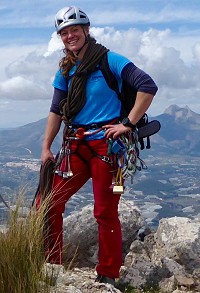

- ARTICLE: Never Say Never - Mistakes in the Mountains 26 Jul, 2021
- ARTICLE: Playing with Fear 9 Feb, 2018

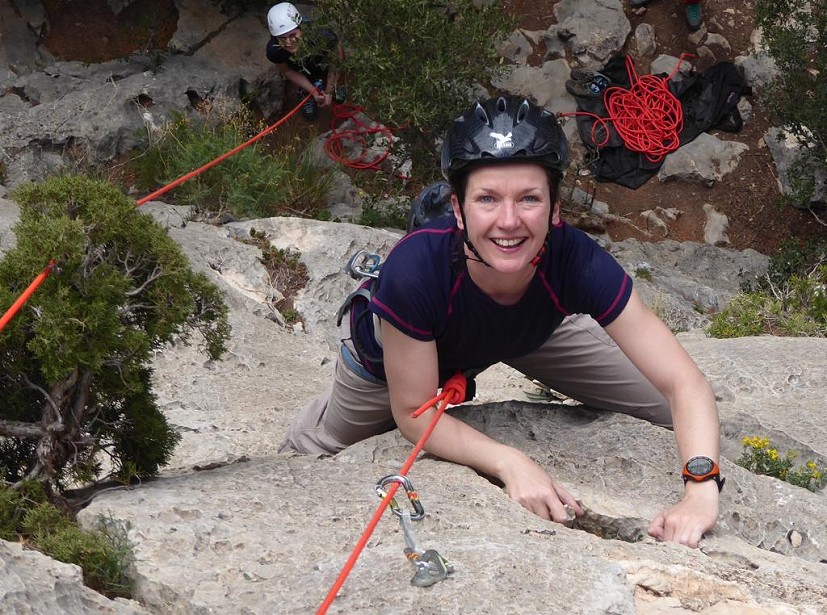
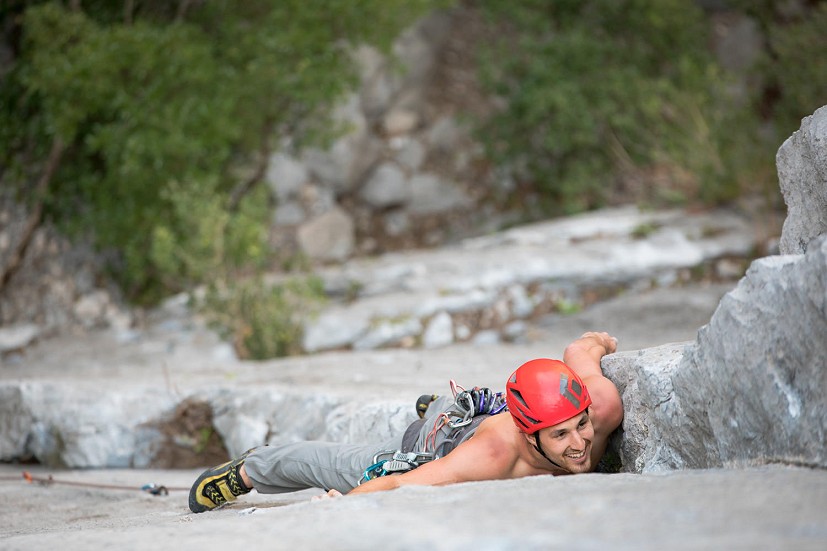
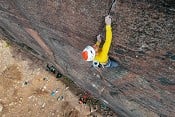



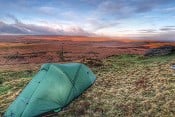








Comments
Next week, number 5: Shouting for someone to lower a rope down!
Just hope it is not the person at the top who told me this story.
Lowers a rope to just out of reach of a panicking leader, then pulls it away, saying " climb it you B....."
True tale, not nice.
To my phantom disliker, I was not involved.
http://onlineclimbingcoach.blogspot.com/2015/06/positive-thinking-is-not-necessary.html
There may be a difference there, as MacLeod I think is talking about maximising performance rather than dealing with fear (obviously the two are connected though). I don't know if it is positive thinking or just a best stab at a realistic assessment, but I often find I think/say to myself 'that gear is good' when trying to commit to something. I find shouting down to my partner "the gear's good so no reason not to go for it" can also be handy now and again.
Maybe adopt the Jerry approach: 'The gear's rubbish, I'm about to fall off but I'm one hell of a gal/guy'
That'll be £50